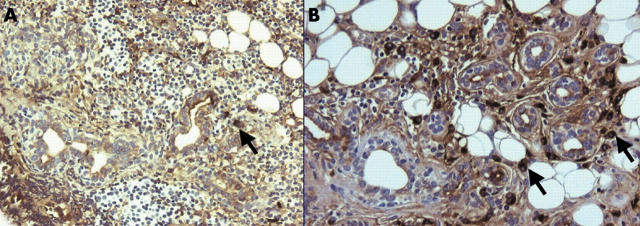Abstract
Case report: The patient was a 42 year old woman with primary SS and associated MALT lymphoma located in the parotid gland and the hard palate. Four infusions of rituximab (375 mg/m2) weekly resulted in complete remission of the lymphoma. An incision biopsy of the parotid gland before and after treatment showed improvement of the (immuno)histopathological characteristics of SS, with possible regeneration of salivary gland tissue. Furthermore, salivary analysis showed decreased inflammatory characteristics and increased stimulated salivary flow.
Discussion: Rituximab is a promising agent in the treatment of SS associated MALT lymphoma. In addition to the effect on MALT lymphoma, B cell depletion by rituximab may also attenuate the activity of SS. This case report is the first to describe the effect of rituximab on histological and sialometric/chemical characteristics of SS. The efficacy of rituximab in the treatment of SS warrants further investigation.
Full Text
The Full Text of this article is available as a PDF (112.1 KB).
Figure 1.
(A) Immunohistochemical staining for IgA positive plasma cells in parotid gland biopsy specimen before treatment, showing a few IgA positive plasma cells (arrow) and a massive infiltrate with a few ducts (magnification x200). (B) Immunohistochemical staining for IgA positive plasma cells in parotid gland biopsy specimen after rituximab treatment, showing less infiltrate and more salivary gland ducts, with a relative increase of IgA positive plasma cells (arrows) (magnification x200).



